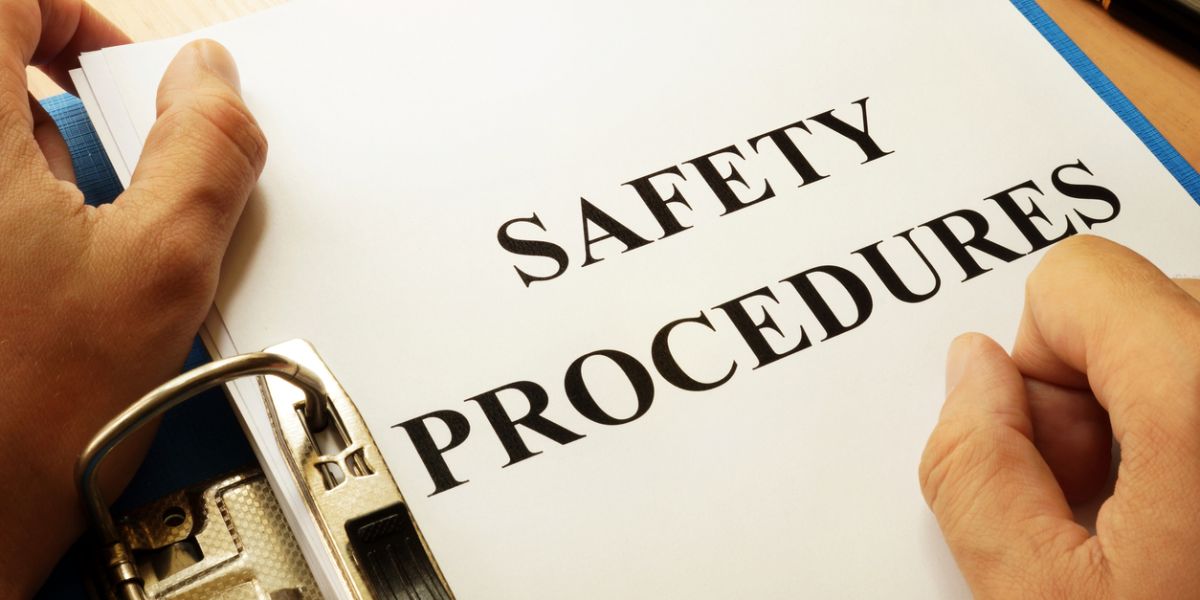On construction sites, at manufacturing plants, and in other inherently hazardous job environments, safety comes first. There should be no cutting corners, no looking the other way, and no pinching pennies at the expense of people and property. The Occupational Safety and Health Administration (OSHA) is charged with ensuring that work conditions are safe and healthful. They set and enforce rules and regulations (called the OSHA Safety Training Requirements) while providing essential education for most private sector employers and their employees.
When it comes to safety, OSHA training has heavily ingrained in onboarding and continual education for employees. What should you know as an employer or employee?

Safe Worksites with OSHA
OSHA was established as a result of the Occupational Safety and Health Act of 1970. The goal was, and remains, “To ensure safe and healthful working conditions for working men and women.” They do this by forcing standards, assisting states in their health and safety initiatives, providing research and education, and providing training in these critical areas.
Who receives this training? Well… if you have had a job in construction, manufacturing, custodial work, grocery retail, or any number of other industries, you have probably had some sort of OSHA education! Employers are required to comply with the standards of the OSH Act and ensure that their workers get the right training.
What is the “right” training? What OSHA safety training requirements are most important? It depends. Working in a grocery store is obviously significantly different than working as an equipment operator on a construction site. OSHA recognizes this and requires that employees provide their workers with trainings that are relevant to the hazards they face in their workplace.
So, to use our grocery store example, those trainings may be on bloodborne pathogens, fire prevention plans, housekeeping safety, PPE (personal protective equipment), preventing workplace violence, ladder safety, and ergonomics. For an equipment operator, relevant training can include occupational noise exposure, PPE, and specific courses for different equipment (e.g. backhoe, forklift, bulldozer, dump truck, etc.).
Again, which OSHA safety training requirements are most important depends on the hazards that workers may face in their particular work environment. Employers will determine this based on an assessment of their needs and with guidance from OSHA. When onboarded, most employees sit through endless training… or at least it feels endless! This is an important step as it helps acclimate them to the work environment and ensure that their employer is compliant with OSHA regulations.
Skip the Onboarding Hassle?
Providing safety OSHA training is essential – so is receiving it on the employees’ side of the equation. But in fast-paced fields, such as construction and manufacturing, the idea of having a qualified worker sitting around instead of out in the field or on the floor is sometimes hard to take. Yes, you have to… but you wish they could just get to work. So do they!
There is a way to accelerate the process of training that typically happens at onboarding. When you work with a company that provides skilled, semi-skilled, and unskilled labor, the right partner will conduct vital OSHA trainings before they set foot in your business. When they show up to work, then, they show up to work. They have all the applicable trainings, and you are covered in terms of both workplace safety and regulatory compliance.
This is, of course, in addition to other benefits, such as the ability to hire workers as needed – such as during peak demand – and easily and seamlessly scale up or down as your business needs require. You can seize the advantage of temporary workers who have been thoroughly screened, vetted, and trained, and they may even become part of your permanent team if you and they are a good fit. Win, win, win.
Why are there OSHA Safety Training Requirements? Because Jobs can be Dangerous!
There is no doubt that jobs in the construction and manufacturing fields are hazardous (not to mention jobs in many other sectors). In fact, most of us encounter hazards daily at work, even if it is the chemicals used to clean the floors. Even so, it is vital that employers ensure their people have access to the right safety OSHA trainings, that they have completed them, and that they are continually educated in terms of new or emerging hazards that may impact the health and safety of the work environment and its people.
When work is inherently riskier, as in the case of construction and manufacturing, it is even more critical that these trainings be conducted regularly and in compliance with OSHA standards. Trying to save some time or money by scrimping on training or even forgoing it is not acceptable. Cutting corners can lead to serious property damage and injuries or even fatalities, not to mention disastrous consequences to companies’ reputations.
Don’t risk it: make sure your people have the right safety OSHA trainings. We can help, so reach out to us today.



